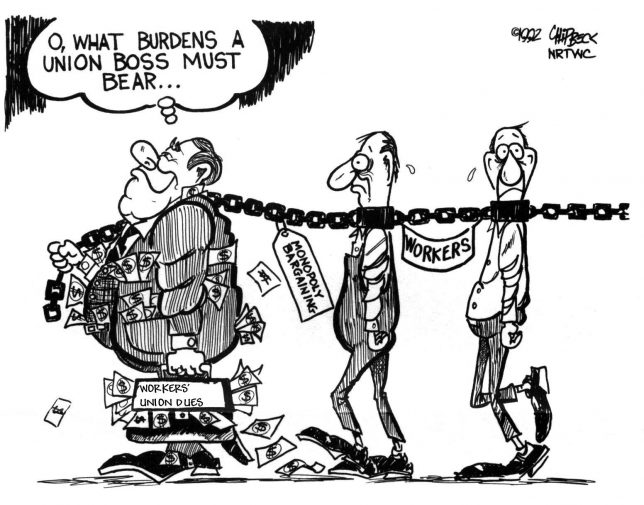Labor Watch
First They Came for Manufacturing… Then They Came for Retail


Labor unions and their front groups brought once-great American manufacturing to a painful state of dull production with over-regulation and foolish wage laws, and now they are trying to plague the retail industry with similar tactics.
Michael Corkery’s New York Times column highlights Walmart’s training program, Walmart Academy, and its role in providing employees with valuable skills in nearby Fulton, New York. Corkery, however, complains that, even with Walmart’s aid, the town’s modern retail workers are still worse off than Fulton’s manufacturing workers were in the 1980s. Fulton, once home to 1,500 manufacturing workers employed by the local Nestlé chocolate factory, has since lost its manufacturing jobs when the factory closed in the mid-1980s.
What Corkery fails to mention, however, is the role that labor unions and their front groups played in bringing the manufacturing industry to its knees and hampering the current retail industry. Unions and their cronies helped run manufacturing into the ground by putting increasing demands on manufacturers. The United Auto Workers Union (UAW) is the most recent testament of the failure of unions to continue to successfully coerce manufacturing workers. UAW tried to unionize a Nissan auto plant in Canton, Mississippi, but the workers rejected the proposal by a dominant margin (2,244 votes against to 1,307 in favor). As CRC’s Hayden Ludwig points out,
The Detroit-based UAW—once a powerful organization rallying 1.5 million members—has overseen the collapse of the Rust Belt auto industry and the closing of dozens of General Motors and Ford plants… Workers in Canton weren’t fooled. They saw the demise of auto factories in Michigan, Ohio, Pennsylvania, Indiana, and California—and they chose to walk away from the UAW.
Similarly, retail jobs like the 300 Walmart positions in Fulton are undermined by organizations like the National Employment Labor Project (NELP) and mainstream media outlets like the New York Times, which support the union-backed “Fight for $15” minimum wages. Corkery’s piece, of course, includes a similar spin:
“’If Walmart really wanted to invest in its workers, it would start people at $15 companywide and adequately staff its stores so they can service customers,’ said Judy Conti, federal advocacy coordinator for the National Employment Law Project.”
But this is platitudinous. Minimum wage hikes not only raise the direct cost of employing each worker and force companies to reduce employee hours, they increase the barrier of entry in low wage jobs, preventing young people not yet in the workforce from beginning their careers. In Walmart’s case, higher labor costs from minimum wage hikes could force the company to reconsider its generous worker training programs and the valuable knowledge and skills they provide.
Kudos to Walmart for giving back its workers, providing them with marketable knowledge and skills—which lead to higher wages when coupled with hard, efficient work—despite the retail industry being endangered by unions.
The biggest immediate benefactor from minimum wage increases are invariably the labor unions that pursue them. With higher wages, unions can earn more money from their membership dues. Companies like Walmart are on the hook to reconfigure their bottom line whenever the minimum wage is increased; unions, on the other hand, reap huge financial gains with little consequence. That’s why the Service Employees International Union has poured $90 million into the so-called Fight for $15 since 2012.
The same unions pushing for $15 per hour minimum wages despise Walmart for avoiding unionization of its workers, in the attempt to stave off the crippling union regulations and expense that contributed to the demise of the Fulton Nestlé factory. United Food and Commercial Workers (UFCW) in particular has repeatedly attempted to organize Walmart, and failed.
Walmart’s training program offers a solid service to its employees. It’s unfortunate that in 2017 low wage workers are still flagging behind workers from a generation ago. If Big Labor gets it’s way on the Fight for $15, the next generation may find itself falling even further behind.
See Capital Research Center’s video short on the ways in which labor unions destroy democracy here:



